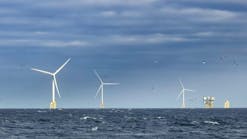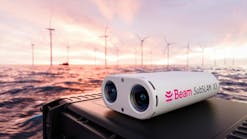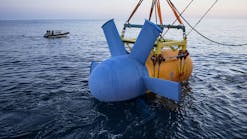Editor's note: This story first appeared in the September-October 2022 issue of Offshore magazine's first annual Offshore Wind Special Report. Click here to view the full Offshore issue or click here to view the special report.
By Jon Ongley, Xodus
The world is on the cusp of a boom in global offshore wind construction and fabrication. The development of this renewable, sustainable form of energy brings an unprecedented scale of opportunities and an almost equal scale of challenges.
Governments have set ambitious targets as they move toward net zero, while also addressing an increasing need to ensure security of supply and greater in-country benefit. That is creating huge pressure for a substantial acceleration and increase in the role that local content will play in delivering those targets. The industry is seeing such pressures in the UK following the ScotWind leasing round and plans for new windfarms in the Celtic Sea. However well intentioned that is, there are concerns that there are simply not enough suitable fabrication or marshalling sites in the UK to meet the increased demand, exacerbated by the complexities of mobilizing floating substructures.
With that caveat in mind, however, the projected exponential growth of offshore wind is good news, sparking considerable discussion and excitement about the huge investment that is expected to come into the UK fabrication supply chain.
The upsurge in interest in floating wind will be a real democratizer in terms of where these substructures can be fabricated. Structures for floating wind, assembled relatively simply for some concepts (for example by bolted connections), as opposed to oil and gas or fixed wind assets, which need space and a large labor presence, bring opportunities for yards that traditionally wouldn’t have been considered for such work. Suddenly, these smaller, geographically scattered sites that have not seen much benefit from offshore wind in the past will be in demand, placing them very firmly in the crosshairs of developers targeting as much local content as possible.
Recent bottom-fixed UK North Sea windfarms have favored large-scale fabrication in Asia and the Middle East. The emerging narrative in the UK that prioritizes local content will be a challenge to address. With little evidence of that happening now, there is an expectation that a clear roadmap needs to develop within the next five years.
As the US ramps up its offshore wind activity, it is in many respects coming from a very strong position in terms of offshore construction. It already has a pedigree of fabrication for offshore oil and gas, which should be readily transferable to offshore wind. Nevertheless, the requirement to scale up onshore infrastructure, training and marine assets to meet the needs of serial fabrication will play a factor into how palatable the investment implications will be. Furthermore, the North Sea market has so far demonstrated that for such serial offshore windfarm fabrication, risks are higher and margins lower than previously seen in oil and gas. North Sea windfarms under construction can have up to 100 foundations and turbines. To enjoy healthy margins from such large serial fabrication scopes, UK and US yards must prioritize investment in modernization and training.
Identifying ways to get costs down will become a priority, and it is likely that pressure for greater automation and robotics will be considered when upgrading existing infrastructure. Striking a balance between innovation and expected job creation and economic opportunity will be a critical conversation as the offshore wind industry continues to grow and expand.
To complicate matters, there are many floating substructure concepts in development, and there is not expected to be much consolidation or standardization of designs for the foreseeable future.
That creates a huge challenge for fabricators trying to decide how they should configure their fabrication capabilities to accommodate so many different design concepts. Until there is a clear market indication of which way the wind is going to blow in terms of reaching a level of standardization, fabricators may be wary to invest early.
To mitigate this, there needs to be greater awareness from developers and governments that there must be earlier engagement and clear signaling to the supply chain where investment should be focused.
Opportunity on a massive scale awaits. Responding to those opportunities will be a challenge, but not an unassailable challenge, provided the industry can successfully mobilize the assets and workforce for this exciting new sector.
Jon Ongley is the renewables construction lead with Xodus.





